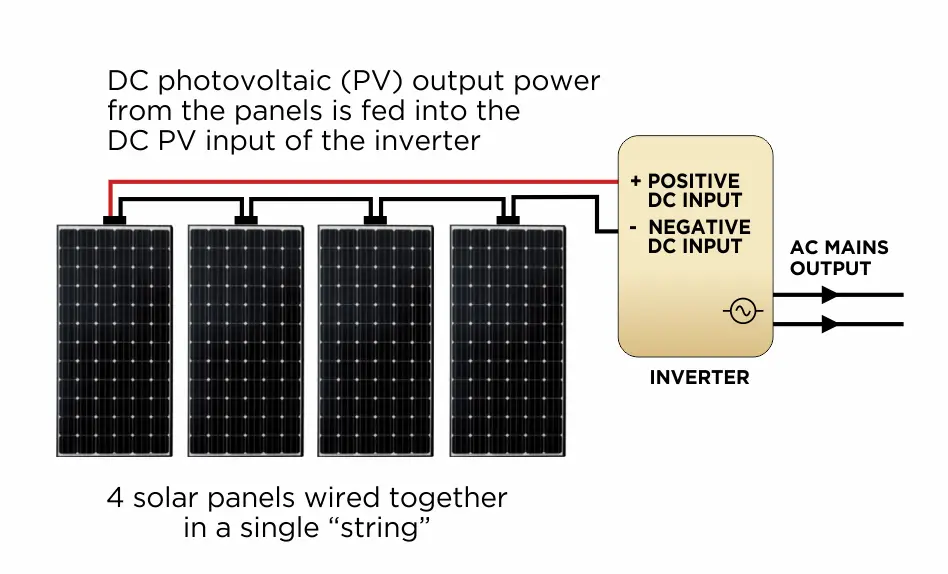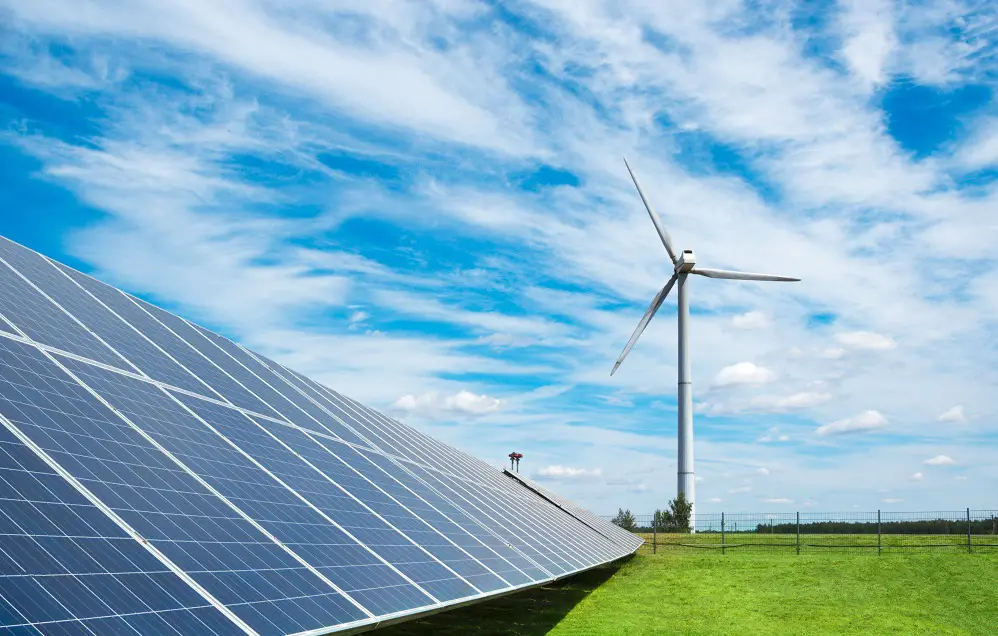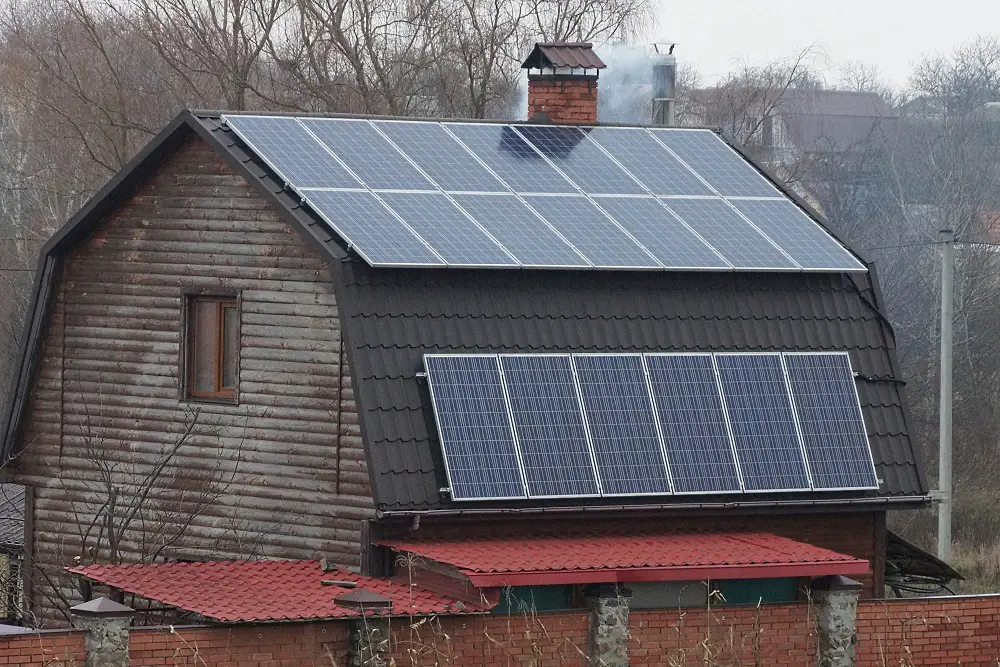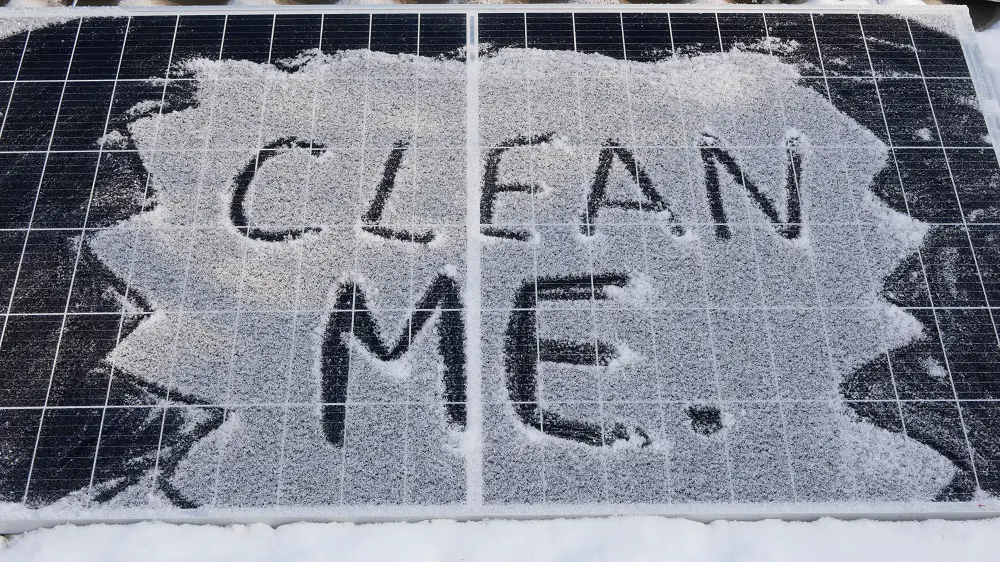Types of Solar Inverters
The 2 main types of solar inverters are:
1. Micro inverters
2. String inverters
A micro inverter works on an individual solar panel, so each solar panel in a complete installation would have its own micro inverter immediately under it. Whereas with a string inverter, a number of solar panels are all wired together in a ‘string’, and the DC current from the whole string is sent into one single inverter.
Micro inverters can be used in situations where it is undesirable to have high voltage DC cabling running across solar installation. Micro inverters are also preferable if any of the panels have partial shading at any time of the day. If one panel in a string of panels is partially shaded, it will have a detrimental effect on the efficiency of the conversion of the DC voltage to AC by the string inverter.
As an alternative to micro inverters, power optimizers can be added to string inverter systems to mitigate this detrimental effect of conversion efficiency.
For cost and simplicity, the majority of domestic solar installations use string inverters. These are also available in different types, having different features and capabilities.
Factors to Consider for Inverters
The type required for any particular installation will depend on a number of considerations, which are outlined here:
1. The maximum power output / voltage of all the solar panels to be connected to the inverter
2. Whether the installation is going to include a battery storage system
3. Whether the panels all face the same direction
4. Whether the installation is to be off-grid, or grid-connected
The basic layout of a solar generation system is shown in the diagram below:

1. Maximum Power / Voltage Output of the Panels
Many solar panels can be connected in a string to a string inverter, but the inverter must be able to handle the maximum power output of all the panels. Solar panels have a standardised power rating system so they can be compared like-for-like. For example, given the same amount of sunshine, a 200 Watt (W) solar panel will generate twice as much electricity as a 100W solar panel.
However, under some environmental conditions, it is possible for solar panels to sometimes generate more than their rated power. This must be taken into account when selecting an appropriate inverter.
For example, if a solar installation is made up from 16 solar panels, and each solar panel is rated at 300W, this installation would have a theoretical maximum power output of 16 x 300W = 4800W, or 4.8 kilowatts (kW). Therefore the inverter chosen would have to have an absolute minimum rating of 4.8kW, preferably 5.5kW to comfortably allow for a 10% increase over standard rated power.
Panel Output Voltages
As the amount of sunlight falling on the panel increases, the output voltage of the panel also increases until it reaches the maximum value specific to that panel. Then, as the amount of sunlight decreases, the output voltage falls back, reaching zero when there is no sunlight at all.
Because of this, it is important to consider the range of DC PV input voltages that the inverter will accept. All inverters have a maximum input voltage and a ‘sweet spot’ input voltage range where they operate most efficiently. It is important to make sure that the solar panels are wired up in such a way to be comfortably below the maximum input voltage, and to match (as close as possible) the sweet spot voltage range for the type of inverter chosen.
2. Battery Storage System
Electricity generated by solar panels must be used at the same time it is being generated, otherwise it is wasted. Many solar installations now are being fitted with battery storage systems included. During the day, any excess solar energy that would normally be wasted is used to charge up the batteries, which can then be used as a power source after the sun has gone down.
Typical domestic battery energy storage systems work on a 48 Volt DC system (48V is a nominal value – such systems can go up to a maximum of about 60V). If a battery storage system is to be included, the inverter must be a type that operates within a 48-60V DC input voltage range.
A battery storage system also requires the use of a unit called a charge controller. The charge controller takes the DC PV power from the solar panels, and converts it to the appropriate voltage to charge the 48V battery bank. For new installations, it is common to use an inverter that has a charge controller built-in.
3. Panels Facing the Same Direction
In the Northern hemisphere of the earth, the sun is always in the south of the sky. This means that solar panels are ideally installed on a south-facing roof aspect, to ensure maximum energy generation. If a south-facing roof aspect is not available, panels can also be installed on east- and west- facing aspects and still provide good generation. Panels installed on a north-facing aspect in the Northern hemisphere will never achieve a significant amount of generation, and so this should always be avoided.
When panels are installed on east- and west- facing aspects, the east-facing panels will generate more during the morning, up until noon when the sun is highest in the sky. Then, in the afternoon, the west facing panels will have higher generation until sunset.
In this case, a dual string PV DC input inverter must be chosen. If the east and west facing panels were both connected together into a single string and fed into a single-input inverter, this would be seriously detrimental to the total power generated. Dual-input inverters have two separate DC solar string power inputs. The east-facing panels are connected to one string input, and the west-facing panels connected to the other. This ensures that the west-facing panels are not hampering the generation of the east-facing panels during the morning, and vice-versa during the afternoon.
4. Off-grid or Grid-connected
If a solar installation is described as ‘off-grid’, this means that the power that it generates cannot be fed back into the national electric grid system. If the solar installation is at a remote location, a long distance away from the nearest grid connection point, it would be impractical to install cables from the inverter to the grid. In this case, any solar generated electricity that is not used would be wasted. For off-grid installations, it is preferable to include battery energy storage to minimise wasted generation (see section 2).
A grid-connected type of inverter will allow any unused excess solar generated electricity to be fed back into the national grid, where it will be used by someone else. Depending on which country you live in, there are various schemes available where your utility company will pay you or offer subsidies on utility bills for your solar generated electricity that you supply back to the grid.




